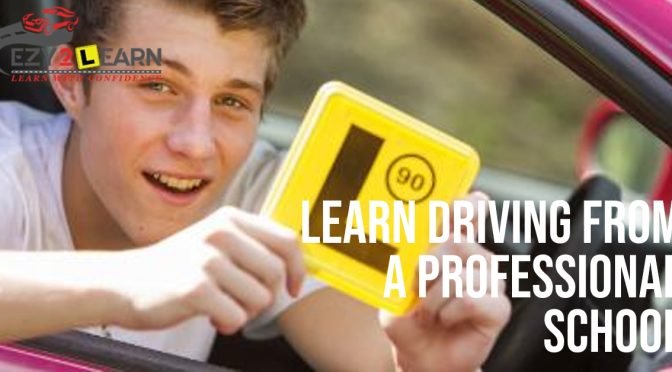The construction industry is one of the pillars of the Australian economy, contributing significantly to employment and economic growth. Central to the structure of this industry are the regulations that govern its professionals, including the requirement for builders’ licences. Builders’ licences in Australia ensure that those working in construction meet necessary standards of competence, safety, and ethics. As the industry evolves, so too must the regulatory frameworks. This article explores the future of builders’ licences in Australia, addressing current challenges, potential reforms, technological impacts, and how shifting economic, environmental, and social dynamics may shape the licensing landscape.
1. Introduction to Builders’ Licences in Australia
In Australia, a builders’ licence is a legal requirement for any individual or business that intends to undertake construction work beyond a specified scope or financial threshold. The licence acts as proof that a builder has met the necessary qualifications, experience, and standards to operate within the construction industry. As Australia moves forward into a future shaped by rapid technological advancements, environmental concerns, and evolving social needs, the future of builders’ licences is a topic of increasing relevance.
Builders’ licences not only ensure the safety and integrity of construction projects but also provide consumers with a measure of trust in the individuals they hire. The licensing framework is governed at the state and territory level, meaning that while there are commonalities, each region in Australia has its own set of rules and requirements for builders. This regulatory framework is subject to ongoing review, with debates about the need for reform growing louder in recent years.
2. Current Licensing Framework in Australia
2.1 National Variations
In Australia, builders’ licences are managed by state or territory government authorities. As a result, the licensing criteria, application processes, and regulations can vary widely between jurisdictions. For example:
- New South Wales: Builders must obtain a licence from NSW Fair Trading, with strict requirements on qualifications and practical experience.
- Victoria: The Victorian Building Authority (VBA) oversees licensing, with a focus on compliance and ongoing professional development.
- Queensland: Builders in Queensland must apply for a licence from the Queensland Building and Construction Commission (QBCC), where the focus is also on consumer protection and the quality of construction.
This variation in licensing requirements between states and territories has led to calls for a more standardised national approach to reduce administrative burdens for builders working across multiple jurisdictions.
2.2 Types of Builders’ Licences
Builders’ licences in Australia are generally classified into various categories, including:
- General Builder: For large-scale building projects such as residential homes, commercial buildings, and high-rises.
- Specialist Builder: For those focusing on specific areas, such as carpentry, plumbing, or electrical work.
- Restricted Licences: For builders who are limited to specific types of construction work or project values.
As the industry evolves, so do the categories and specialisations within the builders’ licensing framework, with potential for new types of licences reflecting future construction practices.
3. Key Challenges in the Current Licensing System
The existing builders’ licensing system faces several challenges that need addressing to ensure it remains fit for purpose in a rapidly changing industry. These challenges include:
- Complexity and Inconsistency: The differing requirements between states and territories create complexity for builders who work across borders.
- Licensing Delays: Obtaining a builders’ licence can be a time-consuming process, often delaying construction projects.
- Skills Gaps: There is a significant skills shortage in the construction industry, making it difficult for companies to meet licensing requirements, particularly when experienced professionals are hard to find.
- Fraud and Non-compliance: The system is susceptible to fraud, with instances of unqualified builders obtaining licences or working without proper documentation.
4. Technological Innovations and Their Impact
4.1 Digital Construction Tools
Technology is reshaping the construction industry at an unprecedented pace, with innovations such as Building Information Modeling (BIM), 3D printing, and drones transforming how projects are designed and managed. As builders increasingly adopt these tools, the skill sets required to operate them will need to be reflected in licensing requirements.
4.2 Automation and Robotics
The future of construction will likely see greater reliance on automation and robotics, reducing the need for manual labor but increasing the demand for technically skilled workers. Builders’ licences may evolve to include competencies in operating and maintaining these advanced machines.
4.3 Impact on Licensing Requirements
As technology becomes more integral to construction, licensing authorities may introduce new requirements for builders to demonstrate proficiency in digital tools and automation, ensuring they are equipped to meet the demands of modern construction projects.
5. The Role of Environmental Regulations in the Future of Builders’ Licences
5.1 Sustainable Construction Practices
Environmental sustainability is now a key priority in construction, with builders increasingly required to adhere to green building standards. In the future, builders’ licences may incorporate certifications related to sustainable practices, such as the use of eco-friendly materials, energy-efficient designs, and waste reduction techniques.
5.2 Green Building Certifications
As more consumers and businesses seek to reduce their environmental footprint, builders with expertise in green building certifications like Green Star or NABERS will be in higher demand. Licensing systems may need to adapt by incorporating these certifications into the core requirements for obtaining a licence.
6. Economic Pressures and Their Influence on Licensing
Australia’s construction industry is sensitive to economic fluctuations, and builders’ licences must be flexible enough to accommodate these pressures. In periods of economic downturn, construction projects may slow, leading to fewer opportunities for builders. Conversely, during periods of growth, there may be a surge in demand for licensed professionals. The licensing system must strike a balance between maintaining high standards and being adaptable to market conditions.
7. Social Changes and Workforce Trends
7.1 Diversity and Inclusion in Construction
The future of construction in Australia will be shaped by efforts to diversify the workforce. There is growing recognition of the need to encourage more women, Indigenous Australians, and individuals from diverse backgrounds to pursue careers in construction. Licensing authorities may implement initiatives to promote inclusivity, such as offering targeted training and support for underrepresented groups.
7.2 Addressing the Skills Gap
The construction industry faces a significant skills shortage, which is exacerbated by the complexity of licensing requirements. In the future, licensing reforms may focus on simplifying the process for experienced workers to enter the industry, while also enhancing training programs to address the skills gap.
8. Potential Reforms in Builders’ Licensing in Australia
8.1 Simplification of Licensing Processes
One of the most pressing issues in the builders’ licensing system is the need for simplification. Many builders have called for streamlining the application process to reduce bureaucratic red tape. The introduction of digital platforms that facilitate faster processing of licence applications and renewals could be a game-changer.
8.2 National Standardisation Efforts
There is ongoing discussion about the potential for a national builders’ licence in Australia, which would allow builders to operate across all states and territories without needing to apply for multiple licences. This reform could significantly reduce administrative burdens and improve mobility within the industry.
9. Future Regulatory Requirements: A Shift in Focus
9.1 Emphasis on Safety and Compliance
Safety will remain a top priority in the construction industry, and future builders’ licences are likely to place an even greater emphasis on compliance with safety standards. Builders may need to undergo more rigorous safety training and demonstrate a deeper understanding of risk management.
9.2 Increased Accountability and Transparency
Licensing authorities may introduce stricter regulations to ensure that builders are held accountable for their work. This could involve greater transparency in reporting and record-keeping, with builders required to provide detailed documentation of their projects and compliance with industry standards.
10. Global Perspectives: How Australia Can Learn from Other Countries
Looking at the licensing systems of other countries can offer valuable insights into potential reforms for Australia. For example, countries such as the UK and Canada have adopted more streamlined licensing processes that focus on core competencies, while also offering flexible pathways for professionals to enter the industry. Australia can learn from these systems to enhance its own licensing framework.
11. Conclusion
The future of builders’ licences in Australia will be shaped by a variety of factors, including technological advancements, environmental concerns, economic pressures, and social changes. As the construction industry continues to evolve, the licensing system must adapt to ensure that it remains relevant and effective in safeguarding the quality and safety of Australian construction projects. By addressing current challenges, embracing innovation, and pursuing necessary reforms, Australia’s builders’ licensing system can continue to support a vibrant and resilient construction sector for years to come.
 0405 477 217
0405 477 217




 Enquire Now
Enquire Now






